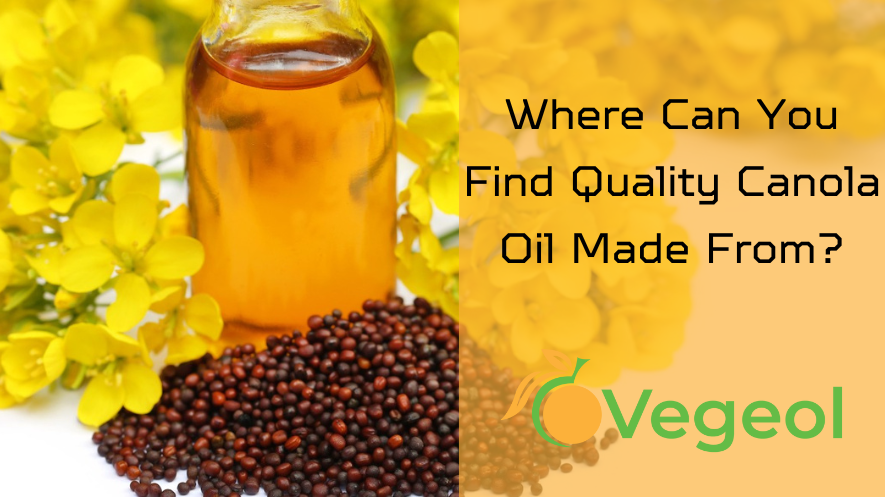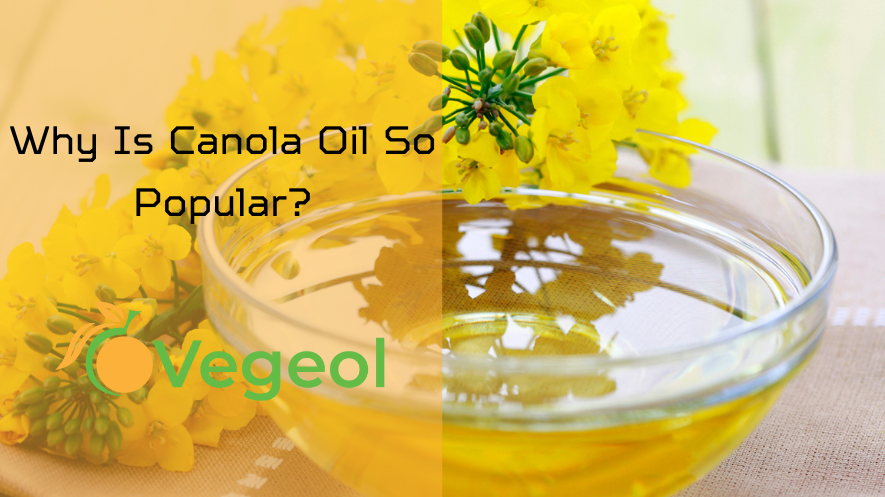If you have a bottle of canola oil in your pantry, odds are that you didn’t get it from a rape plant. The popular cooking oil is actually a cultivar of the B. napus plant, the same species as cabbage and other cruciferous vegetables.
The oil was first developed in Canada via traditional crossbreeding. It is low in erucic acid and glucosinolates, which can be toxic in large amounts. It has also been shown to promote lipid metabolism in healthy people and may help hair and skin health.
It’s a plant-based oil
Rapeseed oil is a plant-based cooking oil that is produced by the seeds of the rape or colza plants. It is low in saturated fat and is a source of heart-healthy monounsaturated and polyunsaturated fats. It can be used for frying, sautéing, and baking. It is also high in vitamin E, which is a powerful antioxidant that can promote eye and skin health.
Rapeseed is a member of the Brassicaceae family and is widely cultivated in many countries around the world. It is used in the production of cooking oils, biodiesel, and lubricants. It is also a source of protein, vitamin B6, and fatty acids. Its seeds contain linoleic acid and -linolenic acid, which are essential fatty acids that the human body cannot produce. It is a rich source of unsaturated fats and is low in trans-fats.
Unlike other vegetable oils, rapeseed oil has a high smoke point, making it suitable for high-heat cooking methods such as stir-frying and pan-searing. It is also known as a healthy alternative to other plant-based cooking oils because it is low in saturated fat and is high in omega-3 fatty acids. It may even help lower cholesterol levels and improve cardiovascular health.
The oil is extracted from the seed of the rape plant (B. napus) by a variety of methods, including pressing and distillation. It is a versatile and popular cooking oil, with a neutral flavor that complements most dishes. It is also low in erucic acid and contains omega-3 and omega-6 fatty acids. It has also been shown to be beneficial for heart and brain health.
There are two main types of rapeseed oil: industrial and culinary. The latter is used for home cooking and in the manufacturing of processed foods. To be called canola, the oil must have less than 2% erucic acid and meet internationally regulated standards. Canada is the largest producer of canola oil, which is why it’s named after the country.
In the 1970s, scientists used traditional plant crossbreeding to genetically engineer rapeseed plants that contained significantly less erucic acid than the original rapeseed variety. The new version was called Low Erucic Acid Rapeseed, or LEAR. However, the name didn’t catch on with consumers, so it was later renamed “Canola” – a combination of Canada and Oil.
It’s a vegetable oil
Rapeseed oil is one of the most popular vegetable oils, and it has many uses. It can be used for roasting and frying, and it is also a great salad dressing or sauce. It can also be used for hair treatment and as a skin moisturizer. Its low saturated fat content and high level of heart-healthy monounsaturated fats make it a healthy alternative to other cooking oils. It is also a source of vitamin E, which has antioxidant properties.
Although rapeseed oil has many benefits, it is not without its downsides. It is prone to oxidation, which can produce toxic byproducts when it is heated or exposed to oxygen. However, the oxidation of rapeseed oil is less severe than that of other oils, such as peanut or sunflower oils. In addition, rapeseed oil is high in omega-3 fatty acids. While omega-3 fatty acids are not essential, they are beneficial for health.
Despite its negative aspects, rapeseed oil is still a good choice for people who prefer to cook with an oil that is healthy and versatile. The fact that it is relatively inexpensive and easy to find makes it an ideal cooking oil. Moreover, its low smoking point means that it can be used for frying and sautéing.
The most important thing to remember is that not all rapeseed oil is the same. There are two types of rapeseed oil: industrial and culinary. The latter is often referred to as canola oil, a combination of “Canada” and “oil.” In order to be considered canola oil, the rapeseed plant must contain less than 2% erucic acid and 30 micromoles of glucosinolates.
Rapeseed oil contains both linoleic and a-linolenic acid, which are essential fatty acids for humans. They cannot be synthesized by the body, so they must be consumed through the diet. In addition, rapeseed contains other phytochemicals, such as phenolic acids, phytosterols, and carotenoids. These phytochemicals have been shown to have anti-inflammatory and anticarcinogenic effects.
Rapeseed oil is also a source of vitamins A and E, which have been associated with reduced risk of certain cancers. It is also a rich source of omega-3 fatty acids, which have been linked to lowered cardiovascular risk and improved lipid profiles. Moreover, replacing olive and other oils with rapeseed oil in the diet of women with polycystic ovary syndrome (PCOS) has been shown to reduce hepatic steatosis.
It’s a cooking oil
Rapeseed oil is an excellent cooking oil that can be used to prepare a variety of dishes. Its high smoke point allows it to withstand high temperatures without burning or smoking, making it a good choice for stir-frying and deep frying. It also has a mild flavor, so it won’t overpower the other ingredients in your recipe. It’s also high in vitamin E, which is an antioxidant that improves immunity and promotes healthy hair and skin.
Rape seed oil comes from the seeds of a plant called rape, which is botanically related to health-enhancing cruciferous vegetables such as broccoli, Brussel sprouts, and cabbage. It’s grown primarily in Canada and Western Europe. Originally, industrial rapeseed (Breastsica rapa) was only used for purposes like lubricating engines and making lipstick, because it contained high levels of two slightly toxic and bitter compounds that make the oil inedible.
However, in the 1970s scientists developed a cultivar of rape seed that was suitable for human consumption. This new variation of the plant was genetically modified to contain less erucic acid and glucosinolates, which made the oil much more edible. It was named Canola, a combination of “Canadian” and “oil,” because it didn’t have the gravitas to attract consumers at that time.
Today, rapeseed oil is one of the most popular cooking oils in the world, and it’s easy to see why. It’s a great substitute for other oils that have a higher saturated fat content, and it can be used to cook at high temperatures without smoking or burning. It’s also a very versatile cooking oil that can be whisked into a vinaigrette, used as a marinade, or drizzled on top of salads.
Rapeseed oil is very affordable and easy to find in the grocery store, but it’s important to read labels carefully. You may want to choose an organic brand, as it will contain fewer additives and chemicals. Additionally, cold-pressed rapeseed oil will have a brighter, fresher taste and will be more likely to be free of rancidity. However, you should be aware that rapeseed oil goes rancid quickly when exposed to heat and light, so it’s best to keep it in a dark cabinet away from the stove and use it up fairly fast.
It’s a health food
Rapeseed oil is a health food because it contains heart-healthy fats, vitamin E, and other vitamins. It is also low in saturated fat and has a high level of omega-3 fatty acids. Additionally, it contains a beneficial ratio of omega-6 to omega-3 fatty acids. This healthy balance is necessary to prevent inflammation in the body.
It is also high in lignans, which have antioxidant properties that protect the cell membranes and may prevent cancer. It is also a good source of vitamin A, which promotes eye health and may reduce the risk of age-related macular degeneration. In addition, rapeseed oil is rich in omega-6 and omega-3 fatty acids, which can help lower cholesterol levels and reduce the risk of heart disease.
The rapeseed plant is in the mustard and cabbage family, and it produces seeds that are used to make oil. This oil can be used for both industrial and culinary purposes. The rapeseed plant was crossbred in the 1970s to produce a variety that had a lower erucic acid content and less of the glucosinolates that give some rapeseed oils a bitter taste. This new plant was called canola, a combination of “Canada” and “oil,” in honor of its largest producer. To be considered canola, rapeseed oil must contain 2% or less erucic acid and 30 micromoles of glucosinolates.
Culinary rapeseed oil is highly processed, and it is often hexane-treated to remove gums, free fatty acids, and unappetizing colors. It is then subjected to a water filtration process that removes impurities. This processing destroys some of the beneficial components in rapeseed oil, so it is important to choose cold-pressed varieties of canola oil.
Rapeseed oil has a high smoke point, which means it can withstand high temperatures without breaking down or forming harmful compounds. This makes it a good choice for frying and deep-frying. It also has a neutral flavor and is versatile enough to use in many recipes.
It has been shown that consuming canola oil can reduce total and LDL (bad) cholesterol, which can decrease the risk of heart disease. However, studies have not been able to determine whether this effect is caused by canola or by other factors, such as diet and exercise.


